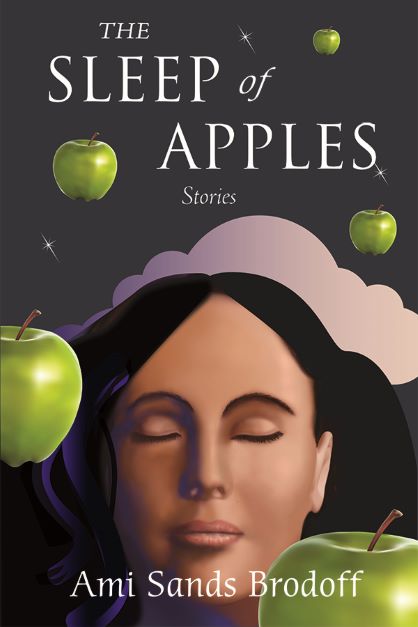Editor’s Note: This exchange is part of a series of brief interviews with emerging writers of recent or forthcoming books. If you enjoyed it, please visit other interviews in the I’ve Got Questions feature.
- What’s the title of your book? Fiction? Nonfiction? Poetry? Who is the publisher and what’s the publication date?
My novel-in-stories is titled, The Sleep of Apples. The publisher is: Inanna Publications. The pub date is: September 30, 2021
- In a couple of sentences, what’s the book about?
The story centers on nine closely linked, diverse characters, brought together in one Montreal neighborhood, Saint-Henri, that’s been slowly gentrifying since the early aughts. Each of my narrators is facing a crisis relating to mental illness, mortality—sooner rather than later—or gender identity.
- What’s the book’s genre (for fiction and nonfiction) or primary style (for poetry)?
Literary, interconnected stories, a novel-in-stories.
- What’s the nicest thing anyone has said about the book so far?
I was moved and grateful to the five authors who blurbed the book. Blurbing is quite a selfless, generous, labour-intensive gesture for writers. I’ve always admired Lisa Moore, one of Canada’s finest fiction writers. I’ve never met her, but she wrote this gorgeous blurb: “The Sleep of Apples is masterfully spare and rich, full of love, quakingly honest. Ami Sands Brodoff’s intricately linked stories show us the ties between parents and children; a brief love between strangers; a tangling threesome; and a couple of teenagers broken by tragedy—just to name a few of the complex, enduring and delicate relationships in this collection. The spectre of death floats over these stories, reminding us of what it means to be ‘wide awake, here, unbearably happy.’ Brodoff’s stories are sparklers held up in the dark—brief, fierce, and bold.”
- What book or books is yours comparable to or a cross between? [Is your book like Moby Dick or maybe it’s more like Frankenstein meets Peter Pan?]
My book is comparable to some recent works which are also novels-in-stories. I’ve been influenced by Joan Silber’s, Improvement, Ideas of Heaven, and Secrets of Happiness; she’s been a mentor to me since I took one of her workshops in New York back in the 1980s. My book has parallels to Elisabeth Strout’s Anything Is Possible, and to the work of David Szalay, Turbulence and All That Man Is. All of these books are distinguished by compression, by meaning which is achieved by the relationship of one story to another and the echoes between them. The reader must be more active.
- Why this book? Why now?
Before the Pandemic hit, I lost my mother, my father, and my beloved other mother (I don’t like the term step-mother) in fairly rapid succession. Then Covid-19 brought the world to its knees. Impermanence, mortality, were on my mind. While caring for my parents at the end of their lives, I became interested in the lost art of dying: how to help your loved ones prepare for death, how to prepare yourself for their deaths, and ultimately, your own. This philosophy of dying well developed during the bubonic plague which decimated Western Europe in the mid-1300s. Up to two-thirds of Europe’s population died during that plague. The notion of dying well is uncannily timely now as we continually grapple with the loss and grief associated with the Covid-19 pandemic. Recognizing your mortality, reflecting on your purpose and what is meaningful to you is key.
- Other than writing this book, what’s the best job you’ve ever had?
I love being a mentor and creative writing teacher. I recently participated in a new program, StoryScaping, offering creative writing workshops to teens and seniors—together—in underserved areas of Quebec. Now that’s a dream job!
- What do you want readers to take away from the book?
I’m hoping readers will become immersed in the characters and live side-by-side with them for awhile. The outgrowth will be increased empathy, helping to reduce stigma against mental illness. I hope my readers will reflect on the quality—not just the quantity—of life. And realize that not everybody will fit into Column A or Column B when it comes to gender.
- What food and/or music do you associate with the book?
Apples, apples, and more apples! Apples dipped in honey. Potato latkes, matzoh ball soup, jelly donuts, kugel, and all manner of Jewish delicacies. As to music, “To Life, To Life, La ‘Chaim.” Also “Everybody Hurts” by R.E.M. and “1-800-273-8255” by Logic. To understand why, you’ll have to read The Sleep of Apples!
- What book(s) are you reading currently?
I’m reading the wonderfully poignant, sad, funny story collection by the 90-year-old fiction writer Hilma Wolitzer called Today A Woman Went Mad In The Supermarket. It’s just so good, each sentence gorgeous and surprising, a time capsule of women’s lives from the fifties up to the present. The final, devastating story brings us right up to now and the impact of the Covid-19 pandemic. It’s also a deep, loving, layered portrayal of a long marriage. On my stack is also, Betty, by Tiffany McDaniel, Pain, by the Israeli author Zeruya Shalev, and The Heart of the Matter, by Graham Greene. I always like to have a classic on the go!
Learn more about Ami at her website.
Follow her on Facebook, Twitter, and Instagram
Buy the book from the Publisher (Inanna Publications), Amazon, or your local bookstore.


